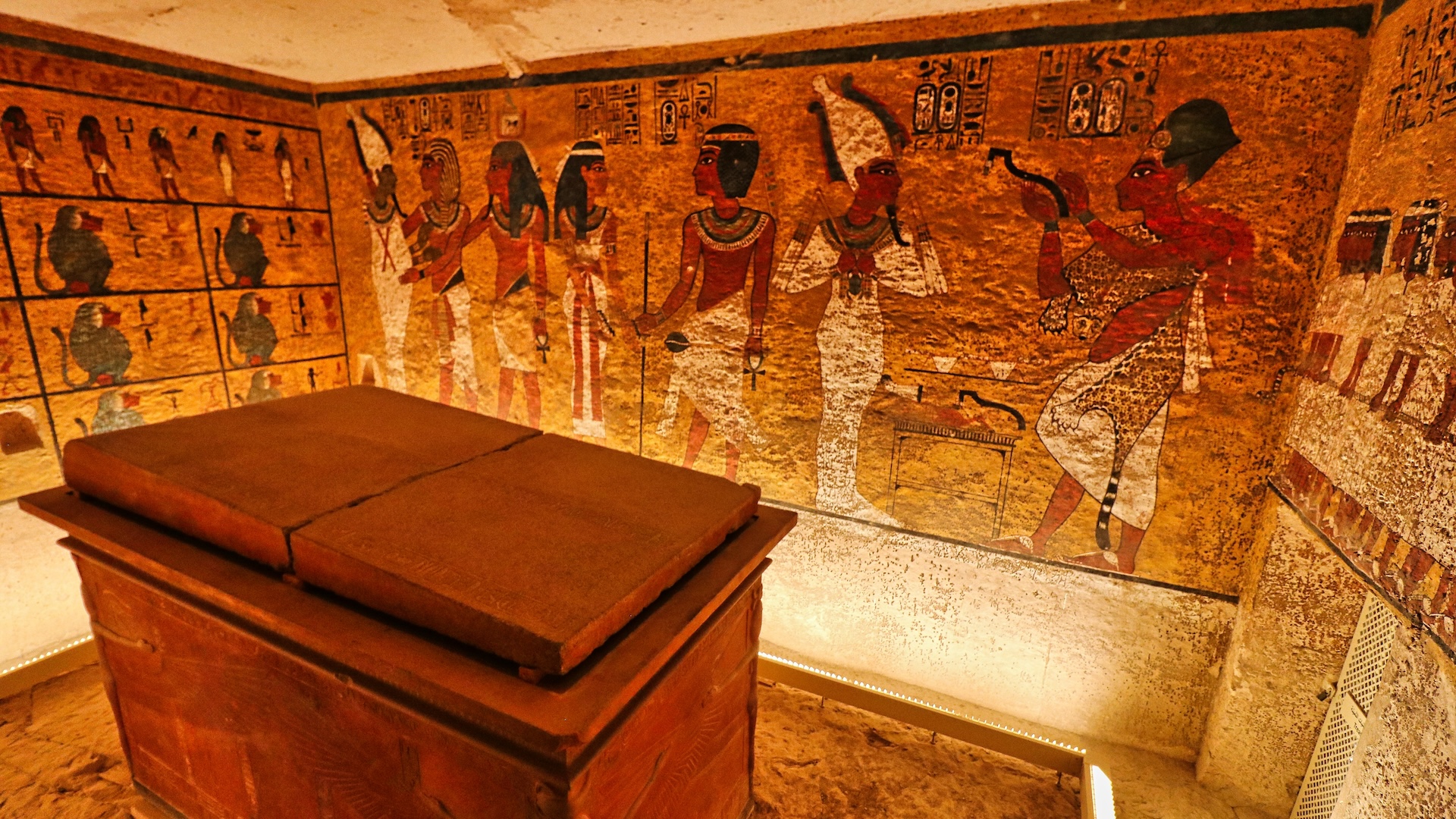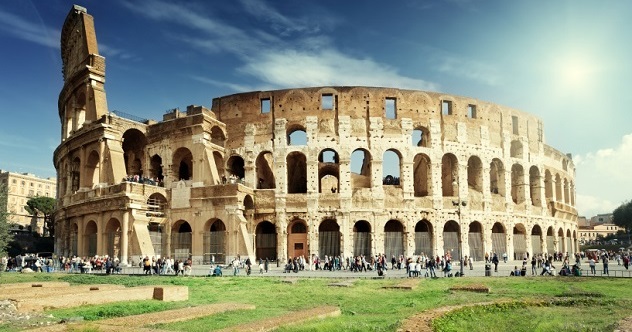An Egyptologist believes he has identified evidence that a rite known as the “Awakening of Osiris” was performed in Tutankhamun’s burial chamber.
According to Nicholas Brown, a postdoctoral associate in Egyptology at Yale University, this is the earliest evidence for the use of the rite on a pharaoh.
“The whole burial chamber seems to be set up to recreate a funerary rite known from later times called ‘the Awakening of Osiris,'” Brown, who described the findings in a paper published Feb. 22 in The Journal of Egyptian Archaeology, told Live Science in an email.
Osiris was an ancient Egyptian god of the underworld, who, according to mythology, was brought back to life after he was murdered by his brother Seth. At one point in the story, his son Horus waves a staff at Osiris and commands him to awaken.
The rite recreates this story in some ways. While reexamining excavation records of Tutankhamun’s tomb, Brown noticed that four clay troughs and four staffs were found in Tutankhamun’s burial chamber. These four troughs would have held libations, likely of water, that could have been poured on or near Tutankhamun’s mummy, while the four staffs would have represented the staff used by Horus.
The water libations hold great symbolic value. In the Pyramid Texts, a series of funerary texts written onto the walls of some Egyptian pyramids, “liquid libations are said to be fluid derived from the corpse of the deceased, or from the corpse of Osiris,” Brown wrote in the journal article. “These fluids are necessary in order to rejuvenate the decaying corpse and restore its life-giving fluid to the body.”
He also noted that water used for libations, retrieved from the Nile River, was known as the “Eye of Horus” and was “a powerful symbol of regeneration and overcoming evil, including death,” Brown wrote in the article.
The four troughs and four staffs would have represented the cardinal directions and would “symbolically surround the deceased for protection,” Brown said in the email.
Son of a heretic
Tutankhamun’s father, the pharaoh Akhenaten, brought about a revolution that tried to focus Egyptian religion around the worship of the Aten, the sun disk. He even ordered an iconoclasm that saw the destruction of the names and images of other deities.
“Akhenaten shifted the country’s religious beliefs to the monotheistic religion focused on the sun-disk, the Aten; this also affected the official afterlife beliefs focused on resurrection through Osiris, which was no longer permitted,” Brown said in the email.
When Tutankhamun came to power, he undid this revolution, thus returning Egypt to its polytheistic religion. “Tutankhamun and the officials acting on his behalf had the opportunity to adapt, alter, and change royal funerary practice and bring back Osiris into the picture,” Brown said. The Awakening of Osiris ritual was one way to show that Osiris was back.
Paula Veiga, a doctoral student and researcher at Ludwig Maximilian University of Munich who wasn’t involved with Brown’s paper but has studied and written extensively about Osiris, generally supported the findings. In addition to water, the troughs may have held other substances, such as ointments, she said.
























